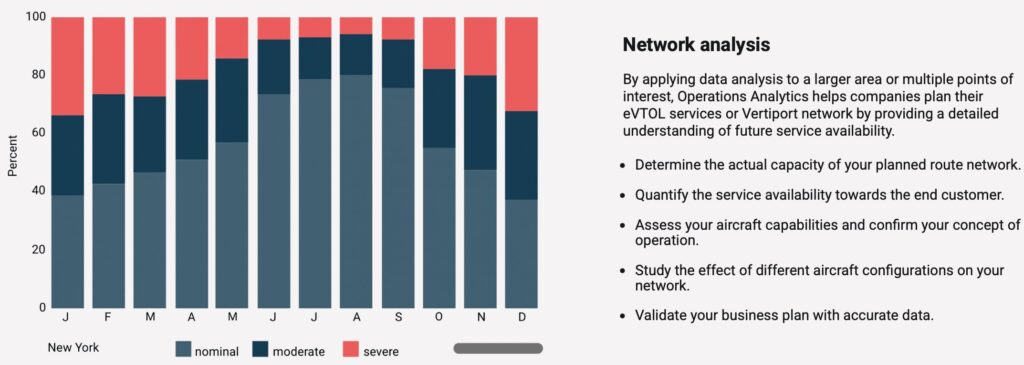FREE Download of Unisphere’s Extensive White Paper: “Wind Impact on Different eVTOL Types”
German-based Unisphere has released an extensive White Paper covering the wind impact on different eVTOL types. As more research is carried out, this is becoming an important area to understand, especially when such an aircraft is taking off or landing. The study focuses on three routes that Archer Aviation aim to use when the company begins commercial operations.
Founded in 2017 by Christoph Schlettig and Michael Anger (former Solar Impulse flight directors), the Unisphere team have great knowledge of operating electrically powered and semi-autonomous aircraft. A majority previously worked on the Solar Impulse project, the first solar-powered aircraft to fly around the world in 2015/2016, demonstrating that electric aviation is possible.
Unisphere’s expertise lies in automated flight operations and technology-driven approaches to managing operational and weather-related risks. At the core of its technology advancements “is the Smart 4D Trajectory, which is the technological backbone for the automation of human tasks in flight operations for higher levels of safety and efficiency,” explains the release.
This latest study investigates the impact of wind on flight performance using historic weather model data, which offers the flexibility to analyse any global coordinate and altitude, unlike traditional weather stations.
Please Download Full White Paper
The release continues, “Four-dimensional flight simulations were conducted for selected routes in the San Francisco Bay area (e.g San Francisco South to Livermore and Napa) and Chicago (Downtown to O’Hare Airport) over a four-year period (2020–2024), considering hourly variations and day/night cycles.”
It goes on, “The analysis focused on approximately 35,000 simulated one-way flights per route, evaluating flight duration and calculating a wind factor to quantify headwind/tailwind effects. Results demonstrate a significant influence of wind on flight time, especially for eVTOLs with lower cruise speeds, where even small wind variations can have a substantial impact.”

The study emphasises that simulating the entire flight profile is crucial for accurate flight time prediction due to the complex interplay of wind direction and speed on altitude during the route, and points out, “rendering simple wind rose analyses is potentially misleading.”
Furthermore, this analysis reveals seasonal variations in wind influence, highlighting the importance of historical weather data for operational planning.
The release concludes, “The findings underscore the necessity of precise flight planning for early-generation eVTOLs with limited battery capacity, where understanding and mitigating wind effects is essential for optimising route design, ensuring safe operations and maximising range.”
For more information
(Images: Unisphere)
For the latest news, insights and content regarding the global Advanced Air Mobility market, please join the following eVTOL Insights channels: WhatsApp, Facebook, Instagram, Spotify, Apple Podcasts, YouTube, X and LinkedIn.


